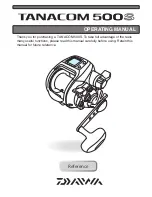
Document Reference: ENG-UMAN-000731
Revision: 5.00
Page 6 of 61
Patients implanted with the Evoke System should not be subjected to MRI as it may
result in significant heating and/or tissue damage.
MRI exposure can damage the CLS, potentially requiring device explantation and
replacement.
MRI exposure may also induce voltages through the leads and stimulator leading to
unintended stimulation, such as tingling, shocking, or jolting.
CT Scans
Patients implanted with the Evoke System may experience a momentary increase in
stimulation when receiving a CT scan. Some patients have described this as
uncomfortable stimulation, jolting or a shocking sensation.
Prior to a patient undergoing a CT scan, turn the CLS off.
Electrosurgery
Patients implanted with the Evoke System should not be subjected to
electrosurgical techniques, such as electrocautery, in close proximity to the Evoke
system components.
o
Electrosurgical devices generate energy that may cause tissue damage at the
lead site and result in severe injury.
o
Damage may also occur to the CLS.
Interference with implanted cardiac devices
The Evoke System may interfere with other implanted stimulators with sensing
capabilities such as demand type pacemakers or cardioverter defibrillators.
The effects of implanted stimulation devices on the Evoke System is unknown.
Stimulator damage
If the CLS case is ruptured or pierced, then patient tissue may be exposed to battery
chemicals, which could lead to burns or tissue damage.
o
Do not implant the CLS if the case is damaged.
Electromagnetic interference
Strong electromagnetic fields may turn the stimulator off, cause uncomfortable or
jolting stimulation or affect communication with the EPC.
Patients should be advised to avoid or turn stimulation off around:
o
Security screeners such as those used at of department stores, public
buildings, and airports – patients should present their implantable device ID
card and request to go around the screener; but if they are required to go
through the screener they should turn stimulation off.
o
Power lines or power generators.
o
Electric steel furnaces and arc welders.
o
Large, magnetized stereo speakers.
o
Tag deactivators such as those found in retail stores and libraries.
Heat due to charging







































